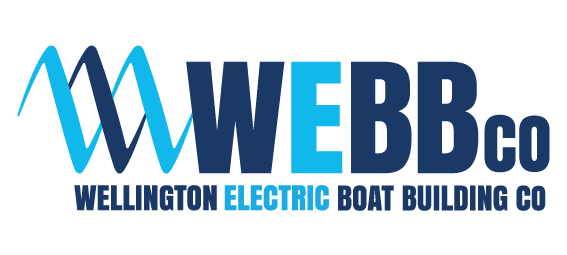First Southern Hemisphere electric ferry launches in Wellington
The Southern Hemisphere’s first electric passenger ferry is finally in the water, soon to undergo sea trials before the anticipated official launch date in September.
The New Zealand-developed vessel is the first fully electric high performance passenger ferry in the Southern Hemisphere, built by Wellington Electric Boat Building Company (WEBBCo) for local ferry company, East By West.
The carbon-fibre 19 metre, 135 pax ferry will be providing a round trip service in Te Whanganui-a-Tara (Wellington Harbour). Powered by partners Meridian Energy, the vessel will transport passengers from Wellington CBD to Days Bay and Matiu/Somes Island.,
“We’re proud to lend our experience and energy to ground breaking projects like this one that prove the potential for the electrification of transport to disrupt the status quo, and improve New Zealanders lives through building climate resilience.” says Meridian Chief Executive Neal Barclay.
East by West Managing Director Jeremy Ward says, “While the quiet hum of an electric boat is a much more pleasurable experience for passengers, this project is driven by our desire to take climate action.”
“Our two other diesel ferries use about 250,000 litres of fuel a year between them, it’s not sustainable for the planet and I knew electrification was the answer. I was surprised to discover we were the first in New Zealand to be doing it, but we didn’t let that hold us back,” says Ward.
Work on the ferry began in 2018, with the ambitious project originally scheduled to launch in mid-2020. Like many complex infrastructure projects, COVID’s impact was felt but the team powered on.
“We are the first in the southern hemisphere to have taken a vessel of this kind off the drawing boards, and onto the water,” says WEBBCo Managing Director Fraser Foote, whose Wellington-based company was first formed to build the ferry.
“Our collaborative approach with a team of leading NZ maritime experts alongside our experienced in-house build team was key to this, and we’re extremely proud of what we’ve achieved together.”
Lightweighting and composites experts, Gurit, were brought in to develop a composite solution which offered not only structural integrity, but also manufacturing efficiencies.
“Our local team of engineers and technicians are excited to see the innovations of the whole build and design team come to life,” says Tony Stanton, Head of Engineering and Gurit Asia Pacific. “This may be a first for NZ - but it certainly won’t be the only one. We see great potential for commercially operated electric vessels throughout NZ waterways.”
New Zealand-based designers of high efficiency vessels, SSC Marine, provided the naval architecture and design coordination. They ensured all areas of performance were considered in the hull design and regulation compliance.
“This is a huge achievement by all involved. The ground-breaking and complex requirements of this project was not easy to execute; but the result is outstanding, and we’re pleased to say she is floating precisely on her marks,” says naval architect Christian Stimson, a Director of SSC Marine Ltd.
New Zealand electrotechnology company McKay provided the electrical scope, including the electrical engineering, electric propulsion and energy storage.
“It is great to see New Zealand companies come together to deliver such a revolutionary first for the Southern Hemisphere. The talent of the companies involved have enabled this project to be a success” says McKay’s Managing Director, Lindsay Faithfull. “We’re proud to see the boat nearing completion.”
The companies involved in the project include vessel designers SSC Marine, specialist consultancy firm Retyna, design specialists Kit Carlier Design, composite engineering company Gurit, boat builders WEBBCo, electrical specialists McKay, and power providers Meridian Energy.
East by West and WEBBCo would like to acknowledge the Energy Efficiency and Conservation Authority, Greater Wellington and Callaghan for their funding support of the project.
While it won’t be heard from shore, locals might spot the ferry undergoing sea trials in the Wellington Harbour over the next few weeks. Public sailings will begin after the launch event and Greater Wellington are looking forward to another addition to the expanding electric Metlink fleet.
For more information please contact Fraser Foote
Ika Rere makes her way onto the water for the first time.
Photo credit: Simon Hoyle at Southlight Studio

